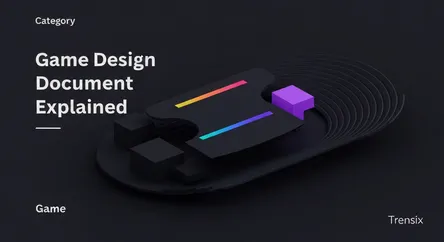Game
Game Design Document Explained

Learn what a Game Design Document (GDD) is, why it's a crucial blueprint for game development, and how it guides a project from concept to launch.
What is it?
A Game Design Document (GDD) is a comprehensive, living document that serves as the blueprint for a video game. It details every aspect of the game's design, including its core concept, mechanics, story, characters, level design, art style, and monetization strategy. Often called the "game bible," the GDD is the central reference point for the entire development team—from programmers and artists to writers and sound designers. It ensures everyone is working towards a unified vision and understands how all the pieces of the project fit together. The GDD evolves throughout the development cycle, updated as ideas are tested and refined.
Why is it trending?
In an industry with increasingly complex projects and larger teams, the GDD is more critical than ever. It acts as a vital tool for communication and project management, preventing misinterpretations and costly rework. With the rise of both massive AAA titles and structured indie development, a solid GDD helps prevent "feature creep"—the uncontrolled addition of new features—and keeps the project on schedule and within budget. It is also essential for pitching to publishers or investors, as it demonstrates a clear, well-thought-out plan for the game.
How does it affect people?
For game developers, the GDD is an indispensable guide that provides clarity and direction, reducing confusion and aligning the efforts of diverse teams. For project leads and producers, it's the primary tool for managing scope and tracking progress against the original vision. For players, the impact is a more cohesive and polished final product. Games developed with a strong GDD are less likely to feel disjointed or unfinished, as the document ensures a consistent and well-executed experience from start to finish, ultimately leading to higher-quality games.